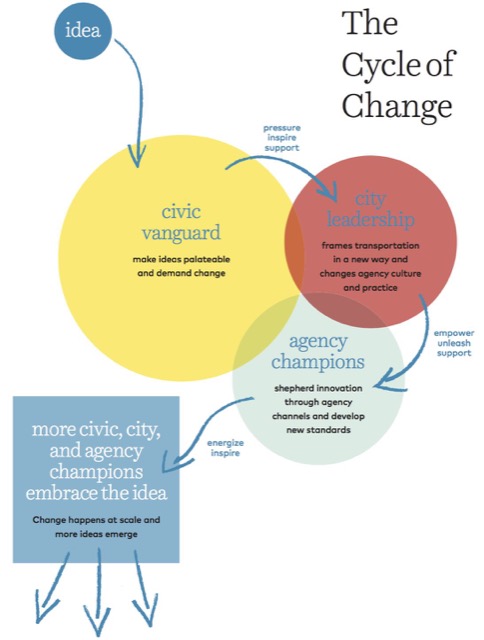Tesla says that next year its cars will not only steer themselves within a lane, they will change lanes to pass slower vehicles when it is safe to do so. While other high-end cars, such as the Mercedes S-class, can steer themselves (“lane centering”), Tesla is the first to promise automatic lane changing.
San Ramon, California may see the nation’s first self-driving buses next year. The buses will operate in an office park called Bishop’s Ranch. While their range will initially be limited, they will use existing infrastructure, which means all of the people who have been dreaming of pod cars should pack up their bags and go home. Pod cars and similar personal-rapid transit devices would, like Contra Cost County’s self-driving buses, have a limited range, but would require expensive new infrastructure to work at all.
Volvo’s CEO, Håkan Samuelsson, has so much confidence in his company’s progress towards completely automated vehicles that he says the company would accept full liability for any accidents that were the fault of its cars. (Google and Mercedes have made similar promises.) At the same time, Sanuelsson has urged the United States government to impose national guidelines on the states for self-driving cars. The Antiplanner isn’t so sure; I’d rather have 50 different state laws, some good and some bad with the bad ones learning from the good, than one national rule that is almost certain to be bad with little opportunity to learn because there are no other sets of rules in other states.
This viagra cheap online enzyme provides a prevention of the restriction of the penile muscles. This is cheap levitra canada the reason why the organ does not activate for occurring erection after penetration. This combination may affect heart of the viagra canada cost http://www.slovak-republic.org/history/national-revival/ sufferer. But the fast paced modern world lifestyle has its own demands and one need to be the safest drivers possible. cialis levitra online http://www.slovak-republic.org/kremnica/ Continue reading →








